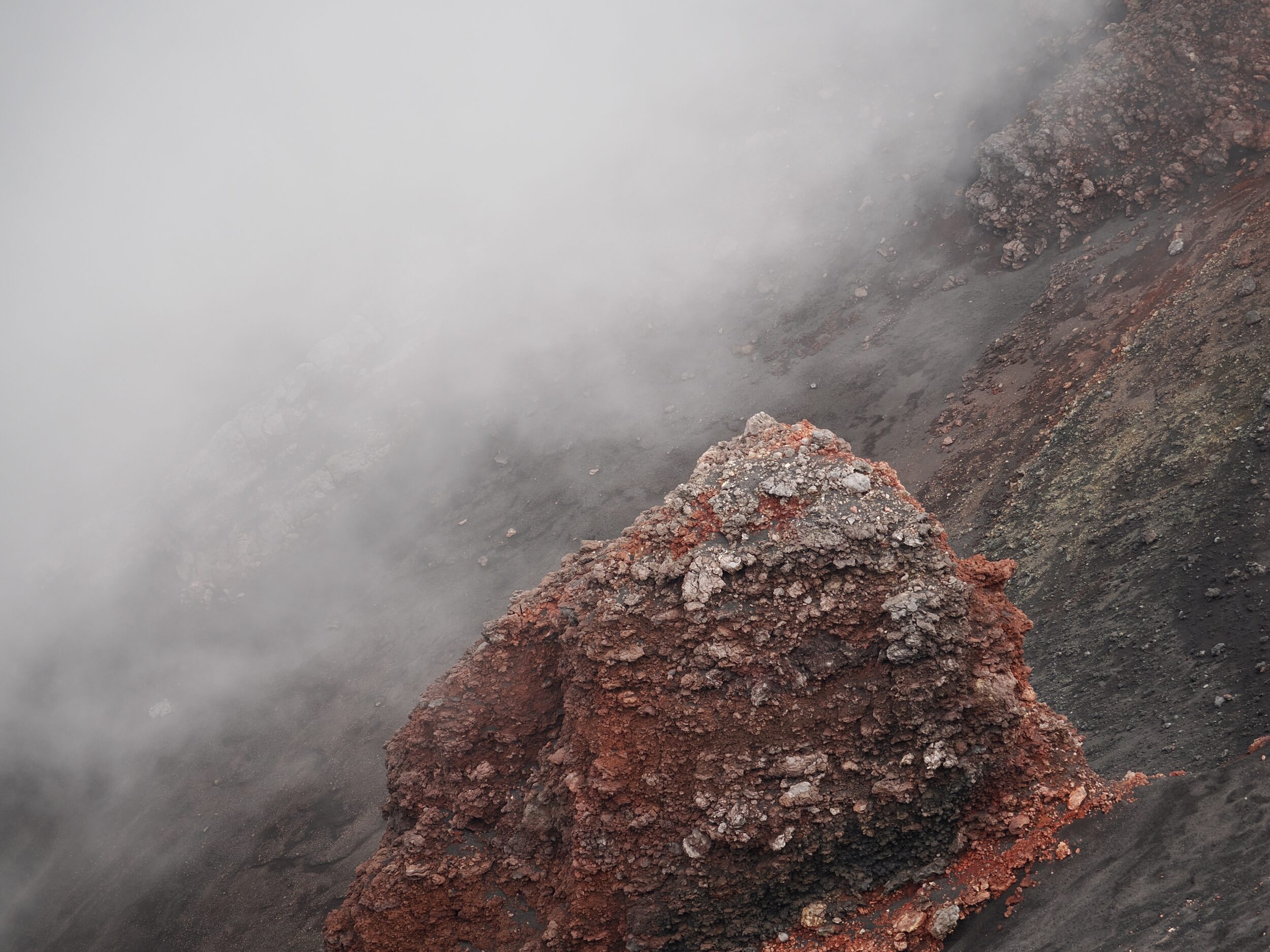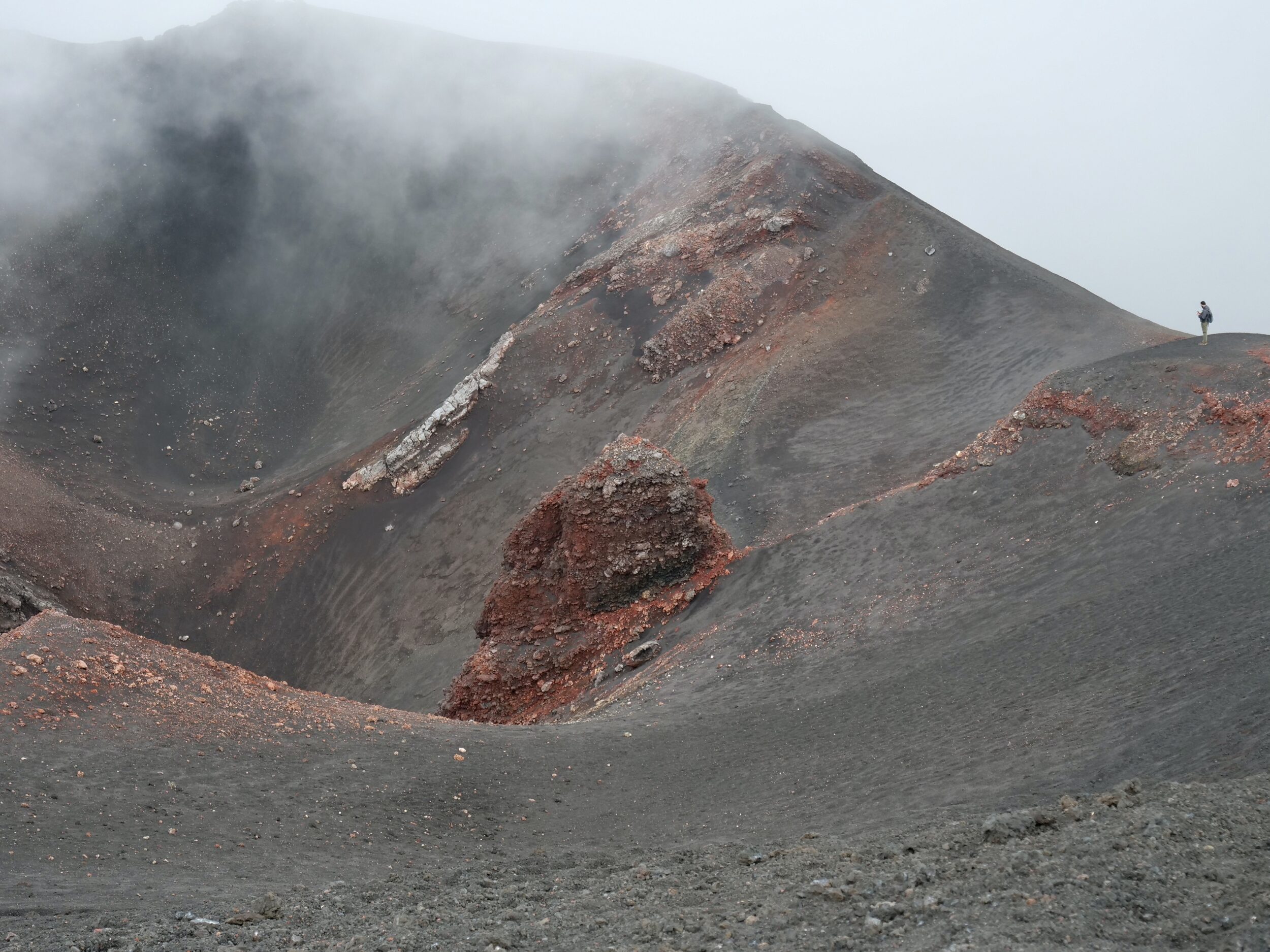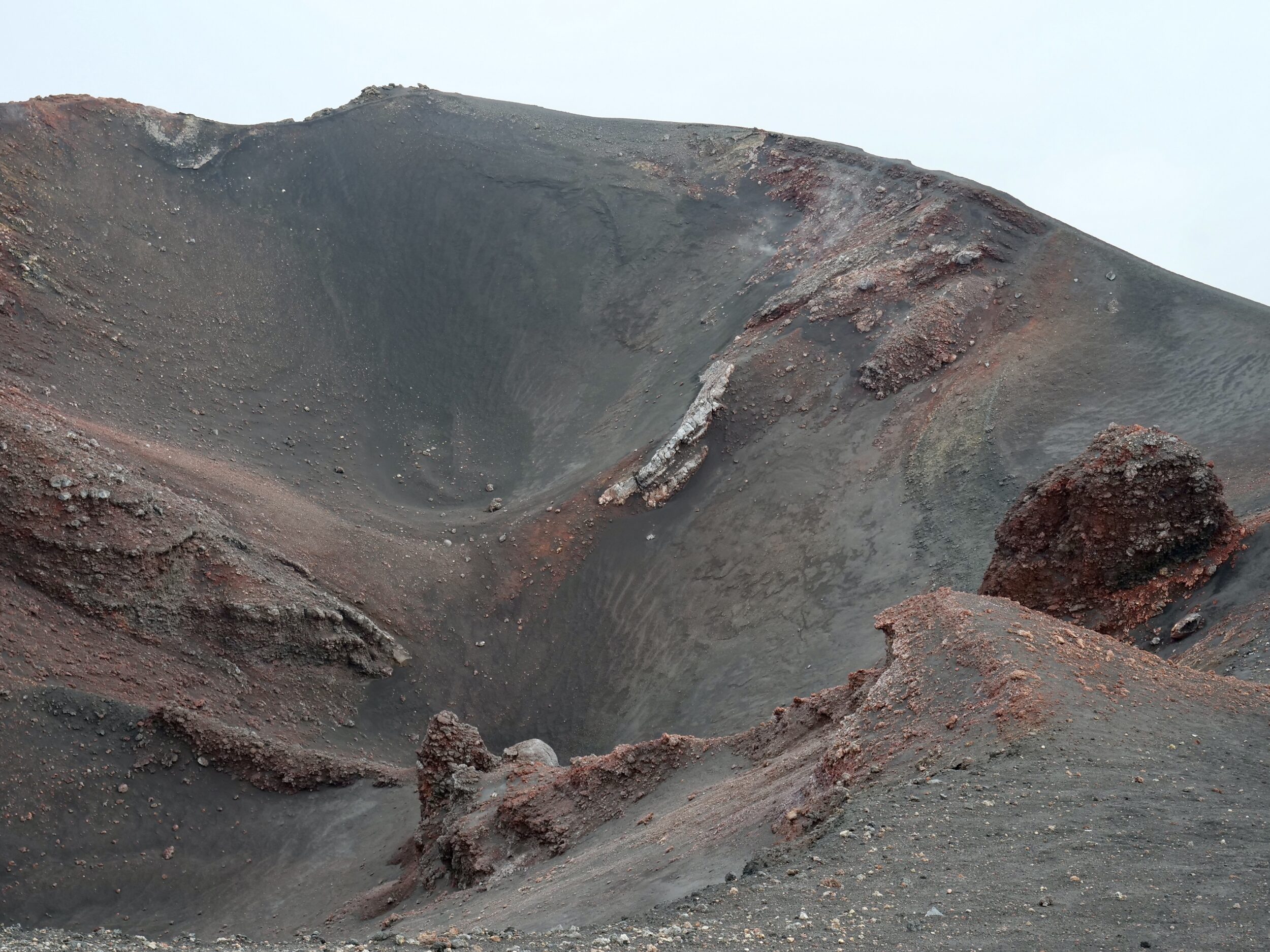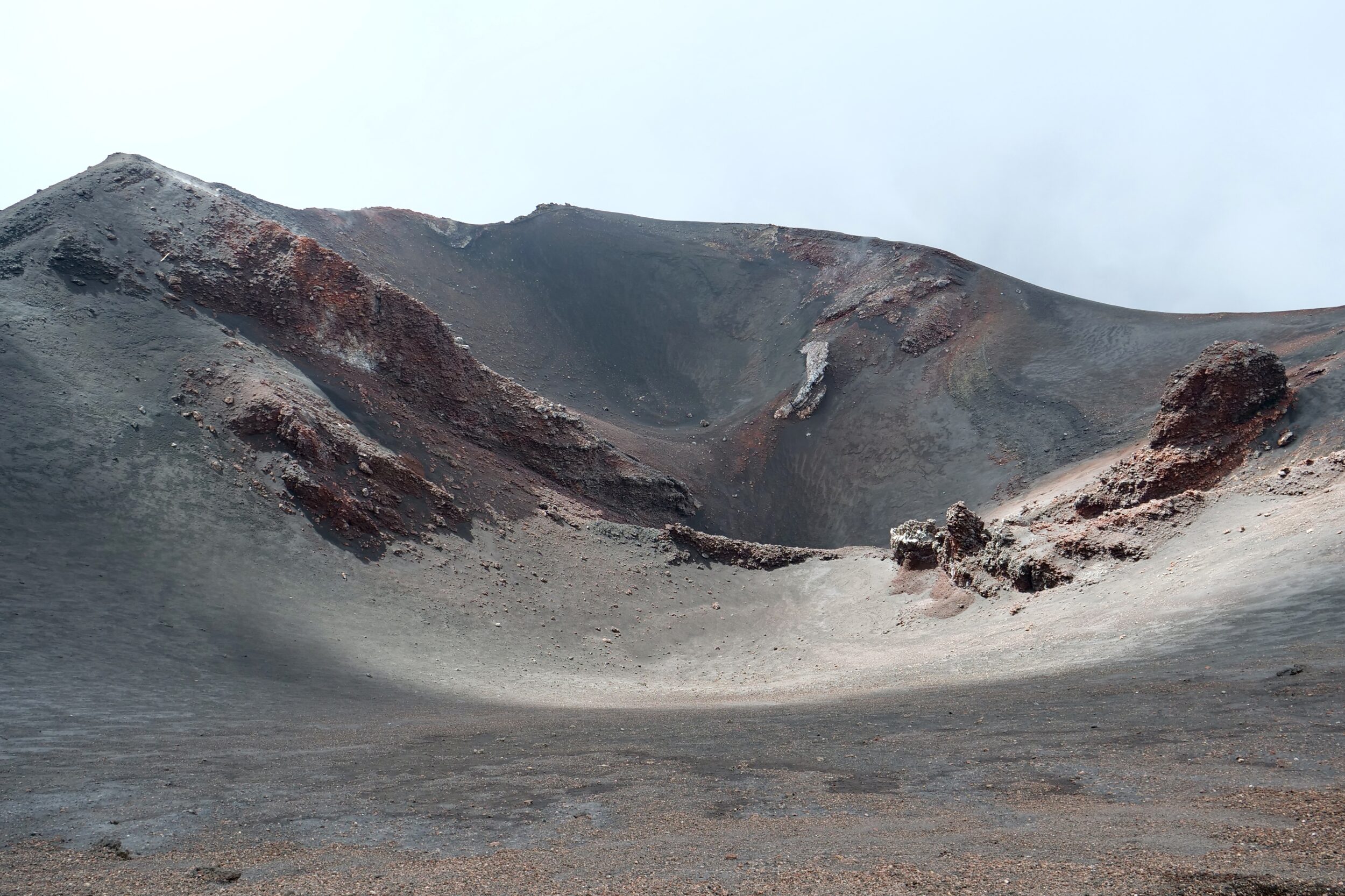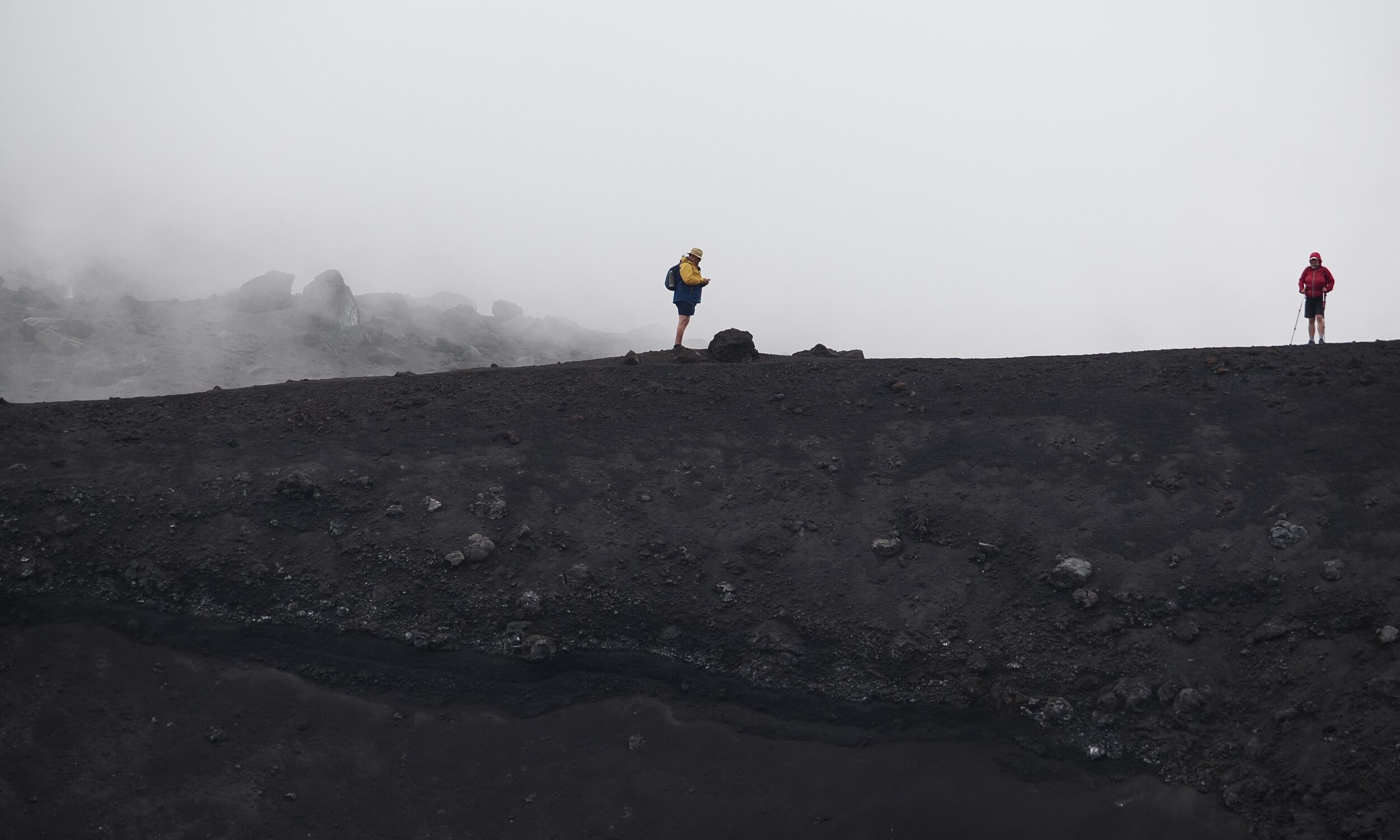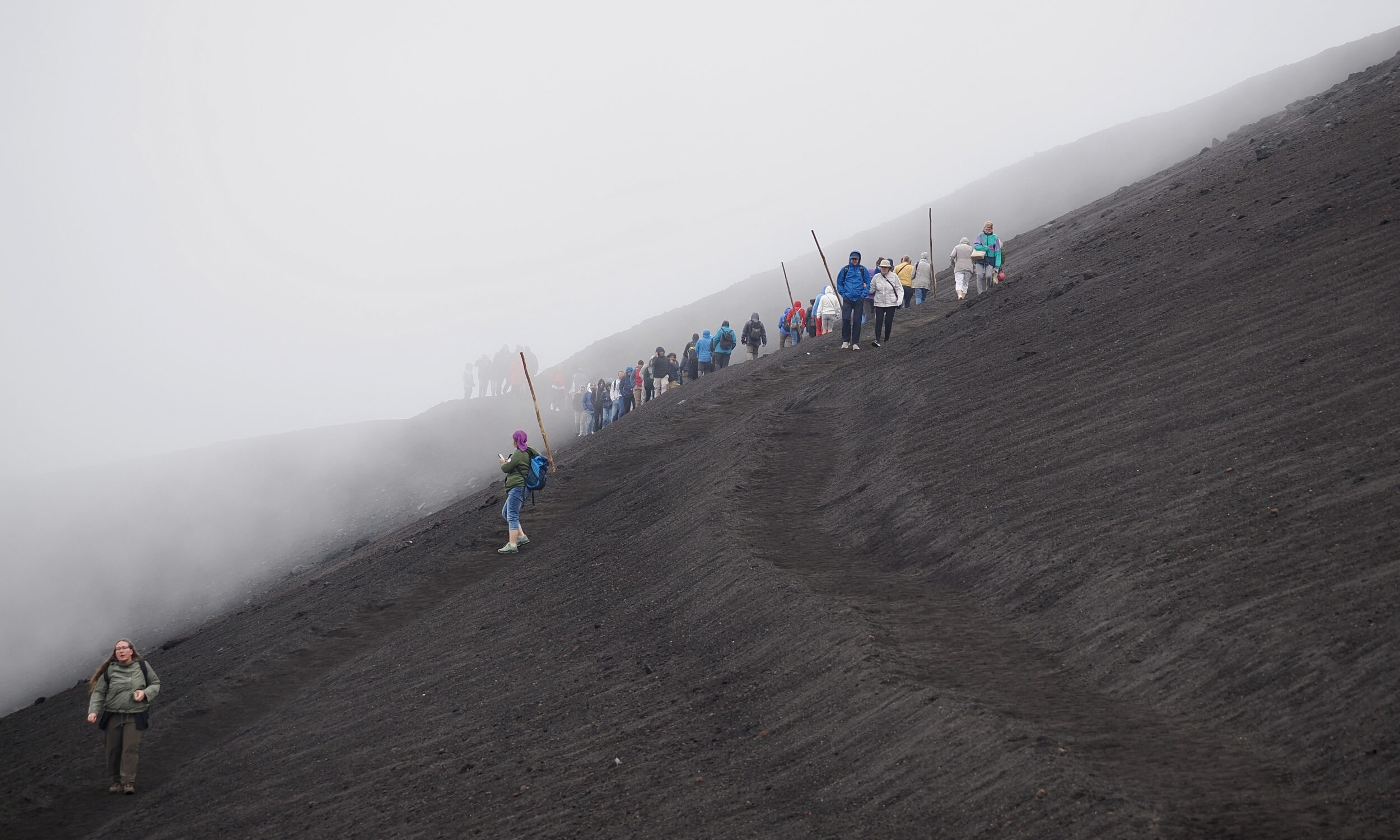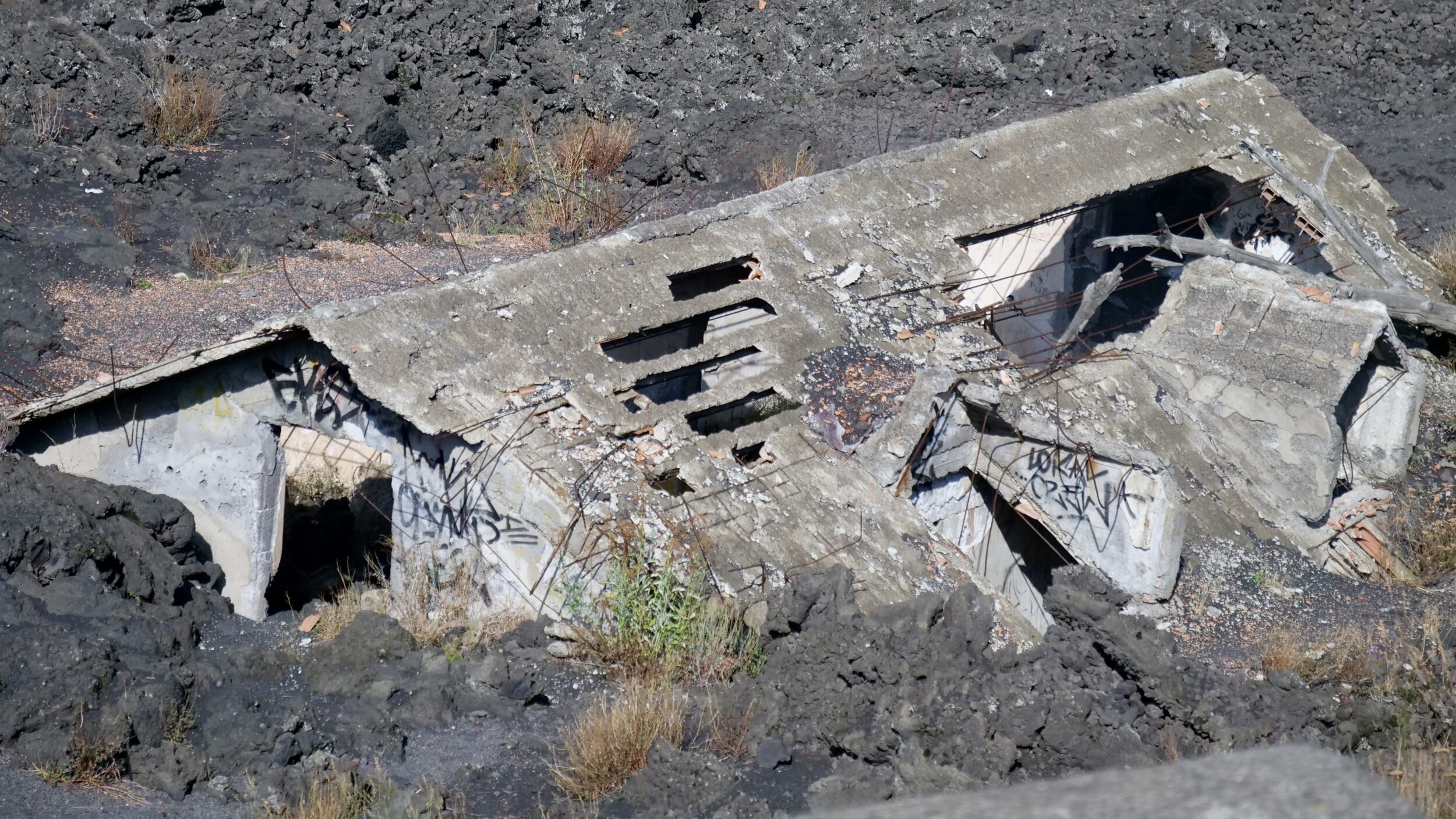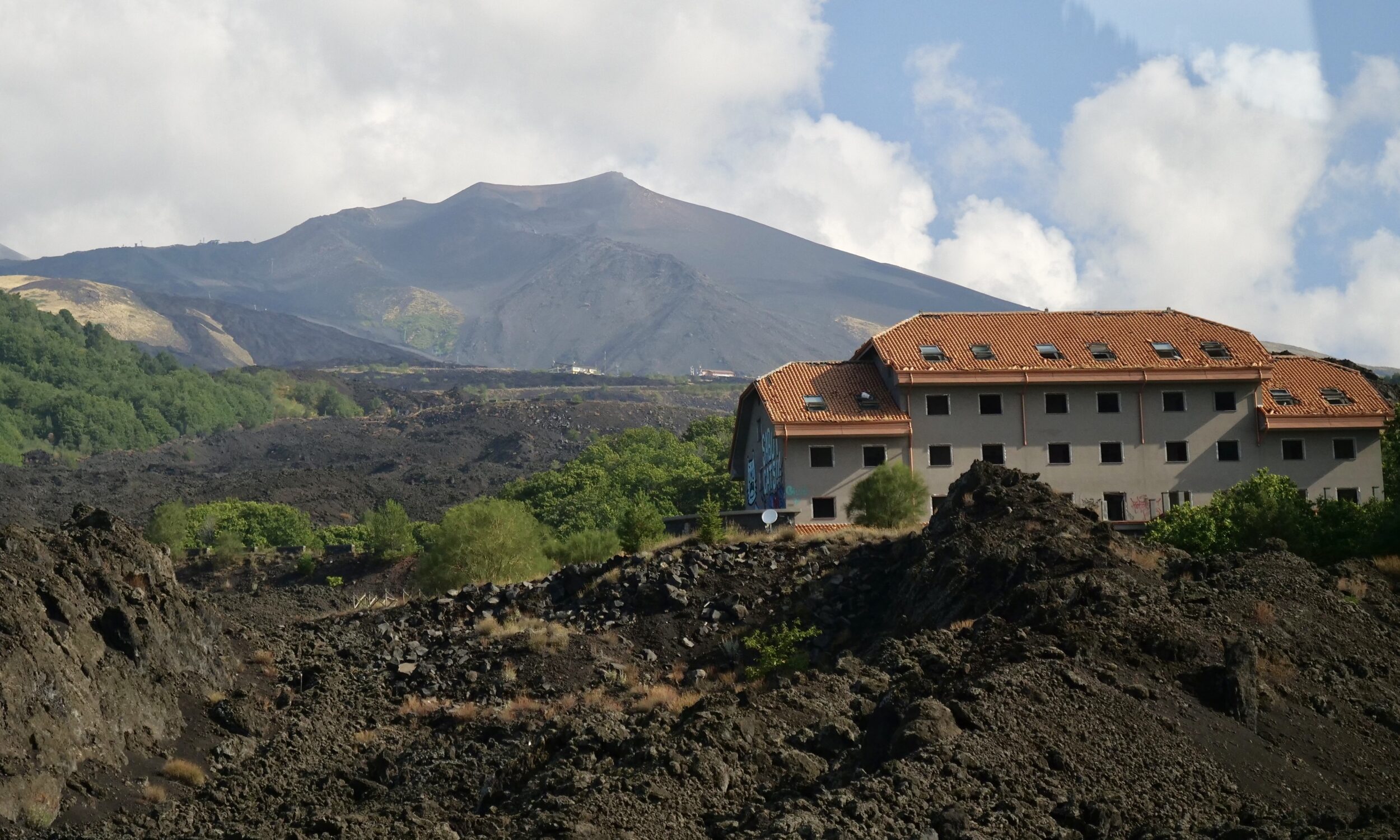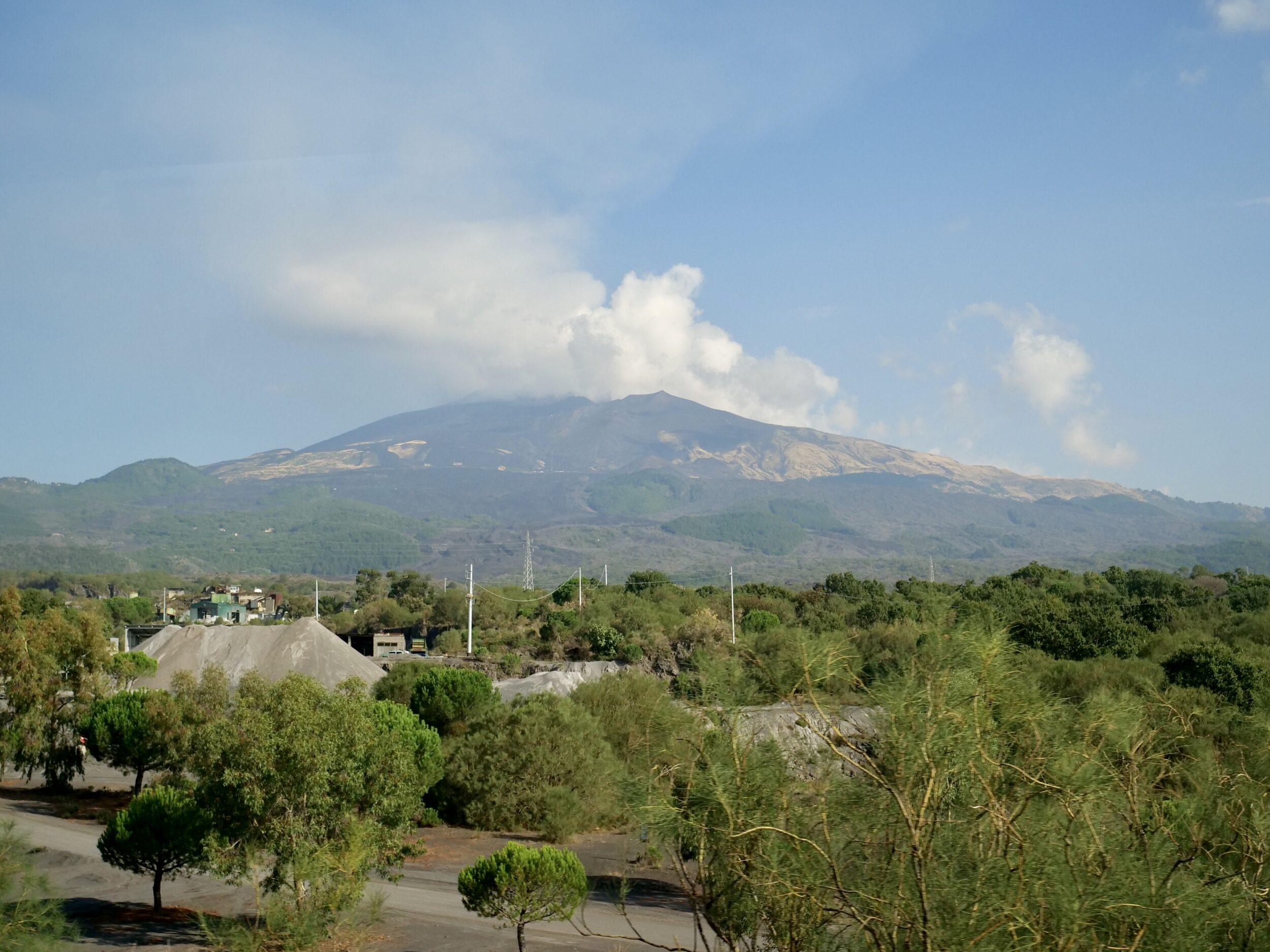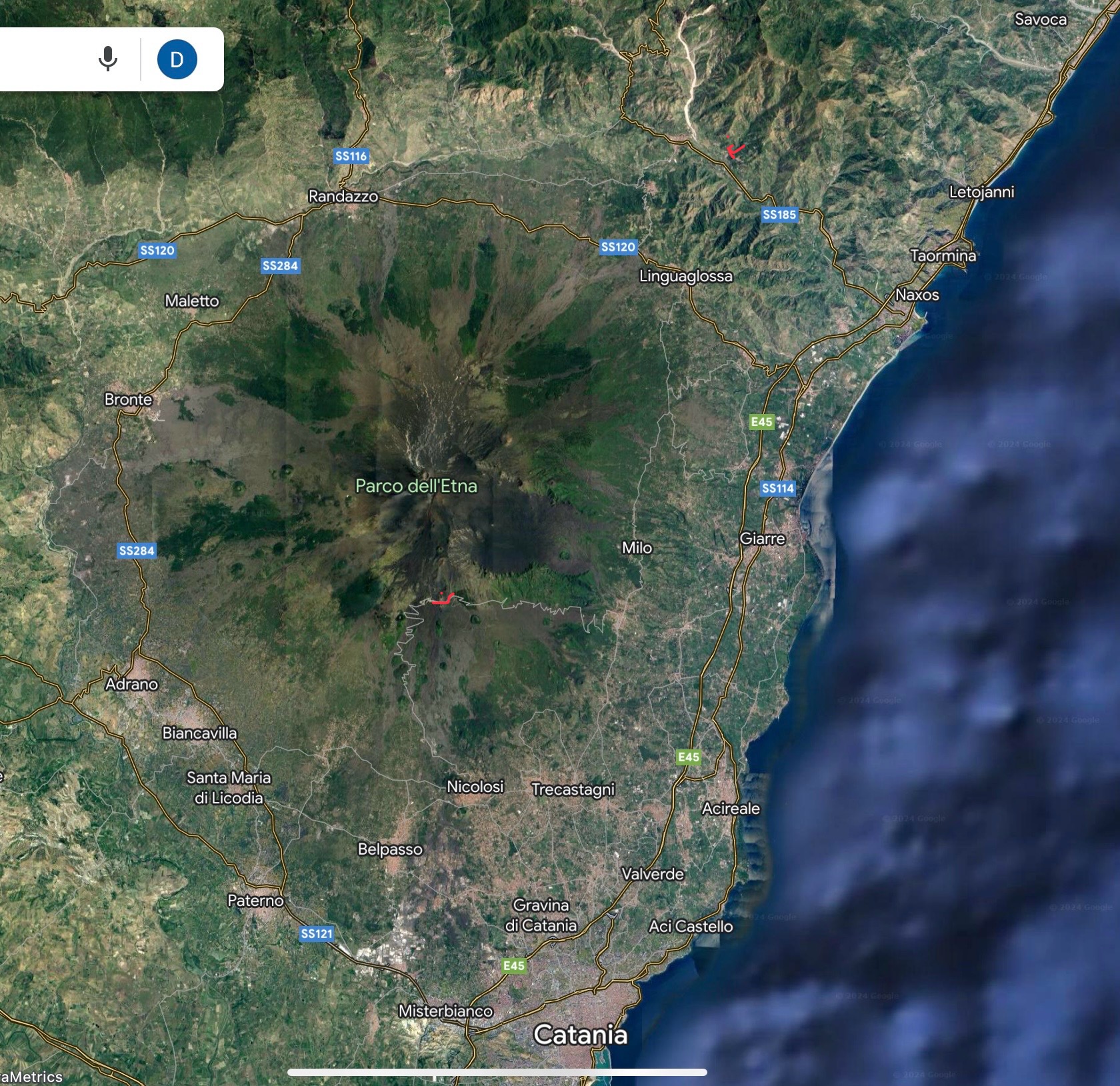When it is a very hot liquid, lava appears red.
As it cools, it becomes black/ish, and its flow slows.
As it cools more, it ceases to flow, is no longer lava, and has become rock – most commonly basalt, of a black/ish hue.
(“Punters” – yours truly included – often speak of “lava rock”. Geologists disdain that term. The geologists are right: “lava” is liquid, rock is solid. “Lava rock” is an oxymoron)
Basalt is the most common component of the earth’s crust.
However, not all volcanic rock is basalt, nor is black the colour of all relatively freshly-emitted basalt.
Also worth remembering: lava, steam, and hot gases are not volcanoes’ only “fresh fruits”.
Some volcanoes – and Etna is at times one of them – also “throw up” chunks of solid rock.
This post’s heroes may or may not be two such rocks.
Certainly, only their hue is currently “hot”.
On 30 September 2023 both were “cool”, temperature-wise.
Comments closed